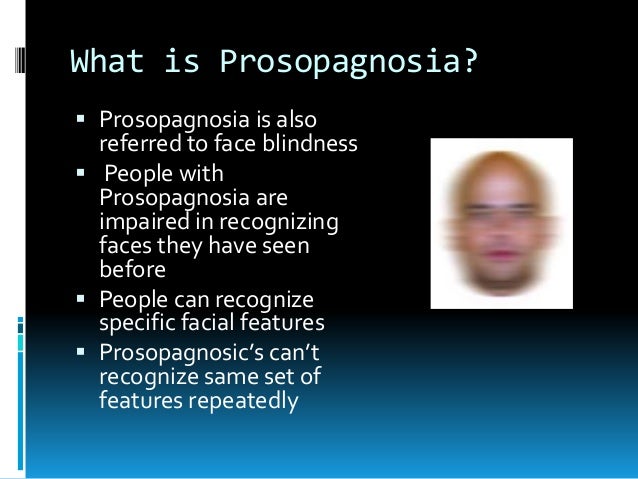Classes of Agnosia

Agnosia can be divided into 2 classes: Apperceptive and Associative.
Apperceptive Agnosia is a failure in recognition due to deficits in early stages of perceptual processing. Apperceptive agnosia patients can’t draw, match or copy objects.
Associative Agnosia is a failure in recognition although there is no deficit in perception. Associative agnosia patients can draw, match or copy objects.
Types of Agnosia

We are going to discussed the 3 main types of agnosia: Visual, Auditory, and Tactile.
VISUAL AGNOSIA
Visual agnosia occurs when there is brain damage along the pathways that connect the occipital lobe of the brain with the parietal and temporal lobes. The occipital lobe assembles incoming visual information and the parietal and temporal lobes allow he/she to understand the meaning of the information.
Visual agnosia refers to the inability to recognize familiar objects and faces in the context of preserved vision functions (i.e. visual acuity, visual field). Visual agnosia can be classified into:-
I)Apperceptive Visual Agnosia
II)AssociativeVisual Agnosia
I) Apperceptive Visual Agnosia is usually caused by lesions to the parietal or temporal lobes on both sides of the brain. Apperceptive visual agnosia is the inability to reliable name, match or discriminate visually presented objects, despite adequate function. For example, an individual with apperceptive agnosia is unable to copy and match a drawing of an object but able to verbally identify the object. When he/she tries to copy a picture of a circle and he will end up drawing a series of concentric scribbles.


Apperceptive Visual Agnosia
Unable to copy and match a drawing of an object.
II) Associative Visual Agnosia is the inability to use derived perceptual representation to access stored information of the object’s functions and associations. Individual with associative visual agnosia is able to use the object, copy and match drawing of an object but unable to identify and name it. However, although those with associative agnosia may be able to copy a drawing with details, but they do so without being informed by the stored knowledge of the stimulus. In other words, if he is given a copy of distorted drawing, he will include the distortion in their drawing without being aware of the error.

Associative Visual Agnosia
–Able to copy and match drawing of an object but unable to identify and name it.
Integrative Agnosia is present in the individual with symptoms of both apperceptive and associative agnosia.
III) Prosopagnosia (face blindness)

Prosopagnosia is the inability to recognize faces. It is caused by issues with the fusiform face area (FFA), a specific region of the brain that recognize faces. Difficulty with facial recognition also occur in Alzheimer’s disease that happens due to brain deterioration that damages FFA region.


IV) Achromatopsia (Colour Agnosia)
Achromatopsia is the loss of colour vision due to lesions in the V4 region of the brain. It’s the inability to name colors despite able to perceive them. Colour anomia results when a lesion separates the V4 regions of the brain from the language areas.
V) Agnosic Alexia (Pure Alexia)
Pure alexia is the inability to recognize words visually. It’s not possible to read with pure alexia. The individual can still speak and write without difficulty.
VI) Akinetopsia (Motion blindness)
Akinetopsia is the inability to perceive motion. The condition cause you to see moving things and objects as a series of stills, like an object moving under a strobe light. If the condition is severe, you may not be able to see any motion at all.
VII) Simultanagnosia
Simultanagnosia is the inability to perceive overall meaning of a whole image or shape, despite ability to recognize individual details or elements.
ADAPTED: